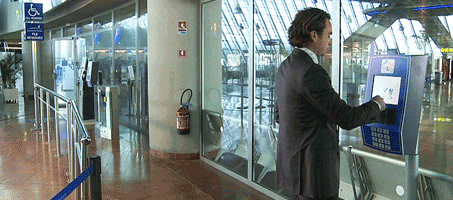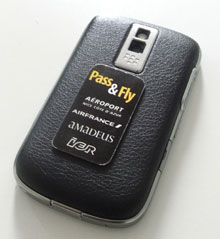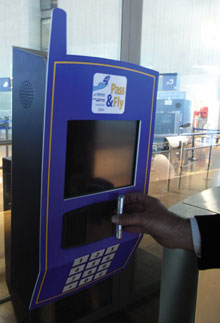
As a short-range, high frequency wireless communication technology, NFC allows for the high-speed transfer of data between enabled devices. It operates at 13.56 MHz, therefore allowing data to be transferred at speeds up to 424 Kbits/second and another of its major appeals is that it is both a ‘read’ and ‘write’ technology, thus allowing for the transfer and storage of data between each of the respective devices.
While the technology is still in its relative infancy – at least within the aviation sector – pilot schemes have already been undertaken to put the viability of the technology to the test.
NFC in action

Last year, Air France, Amadeus and IER partnered with Nice Côte d’Azur Airport in one of the industry’s largest NFC pilot schemes. Over a six-month period, members of the airport’s Club Airport Premier (CAP) passenger programme and the airline’s frequent flyer programme travelling on the route between Nice and Paris Orly piloted Pass and Fly – an NFC-based boarding pass.
The idea of the project was to establish whether passenger recognition, the crediting of CAP points and aircraft boarding could be simplified through the use of the wireless technology. To enable the project, Amadeus developed the NFC application for mobile phones, while the company worked with its partners to develop the departure control system and the NFC readers. Once the infrastructure was in place, the NFC-enabled mobile phones could interact directly with the NFC readers.
“We decided to try to see how this technology works and we wanted to see whether using NFC technology for a real flight was possible,” said Yannick Beunardeau, director airport solutions, Amadeus. “What we have since proven is that we can use NFC for real operations of aircraft as people were successfully boarding planes using the technology. The airline, the airport and the passengers all appreciated the way that the technology was working. For the passenger, there were many benefits, mostly the fact that they didn’t even need to print their boarding pass. Normally, they had to show their boarding pass and their card to get the fast track, and another to collect the frequent flyer points. Instead, using NFC technology enabled all of these processes to be complete in one transaction in a matter of milliseconds.”

While the main idea of the project was to establish the potential of NFC-based boarding passes, Beunardeau explained that the technology can provide further benefits. These include implementing NFC-based payment systems and using the technology to allow access to restricted areas of the airport, as well as using NFC to provide the airport with information on passenger flows between two specified points.
Future challenges
Of course, each of these processes would require the passenger or member of staff in question to have access to an NFC-enabled mobile phone, but with such handsets yet to be made widely available, the widespread implementation of the technology appears to face a major hurdle.
However, mobile phone manufacturers – namely Nokia and Apple – have recently vowed to integrate the technology into their future handsets, with NFC-enabled smartphones expected to be more readily available as early as next year. Furthermore, Beunardeau explained that Amadeus has designed a chip that can be added to the phone in the form of a sticker, which will enable the handset to be used as an NFC device.
Another issue that also needs to be addressed is that of cost. Beunardeau said: “As NFC readers use an existing reader with some modifications, it isn’t too expensive to implement and I wouldn’t say that it is out of range because of cost. We have to remember, also, that this could provide a permanent solution.”
The contactless airline? Utilising NFC: The future is now!
Air Canada’s director, customer solutions & innovations, Patrice Ouellette, will address delegates on the issue of Near Field Communication technology at Check-in 2010 in Las Vegas, September 8-10.





